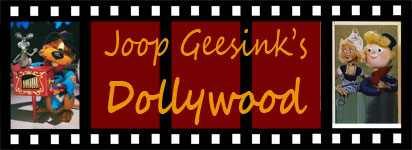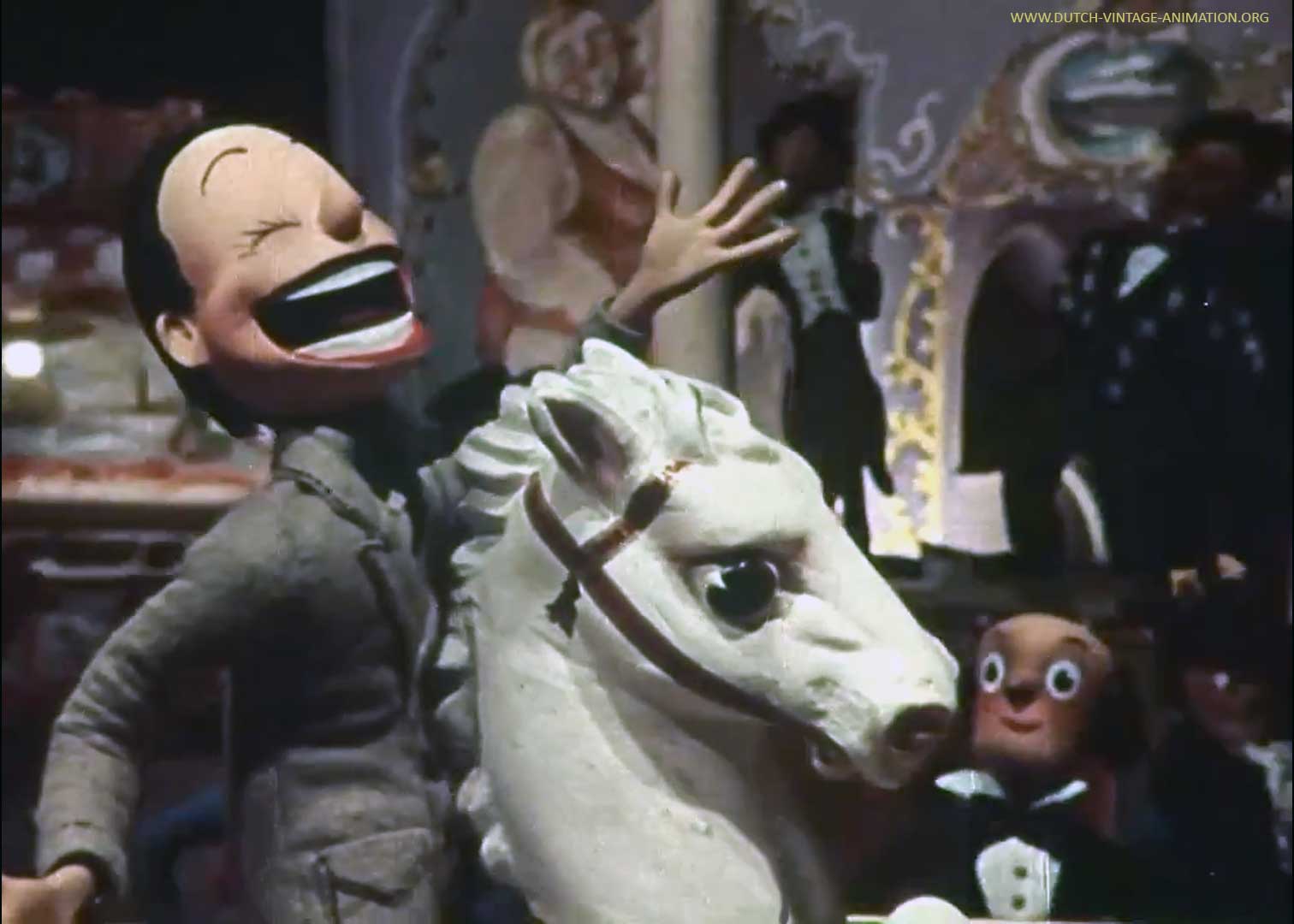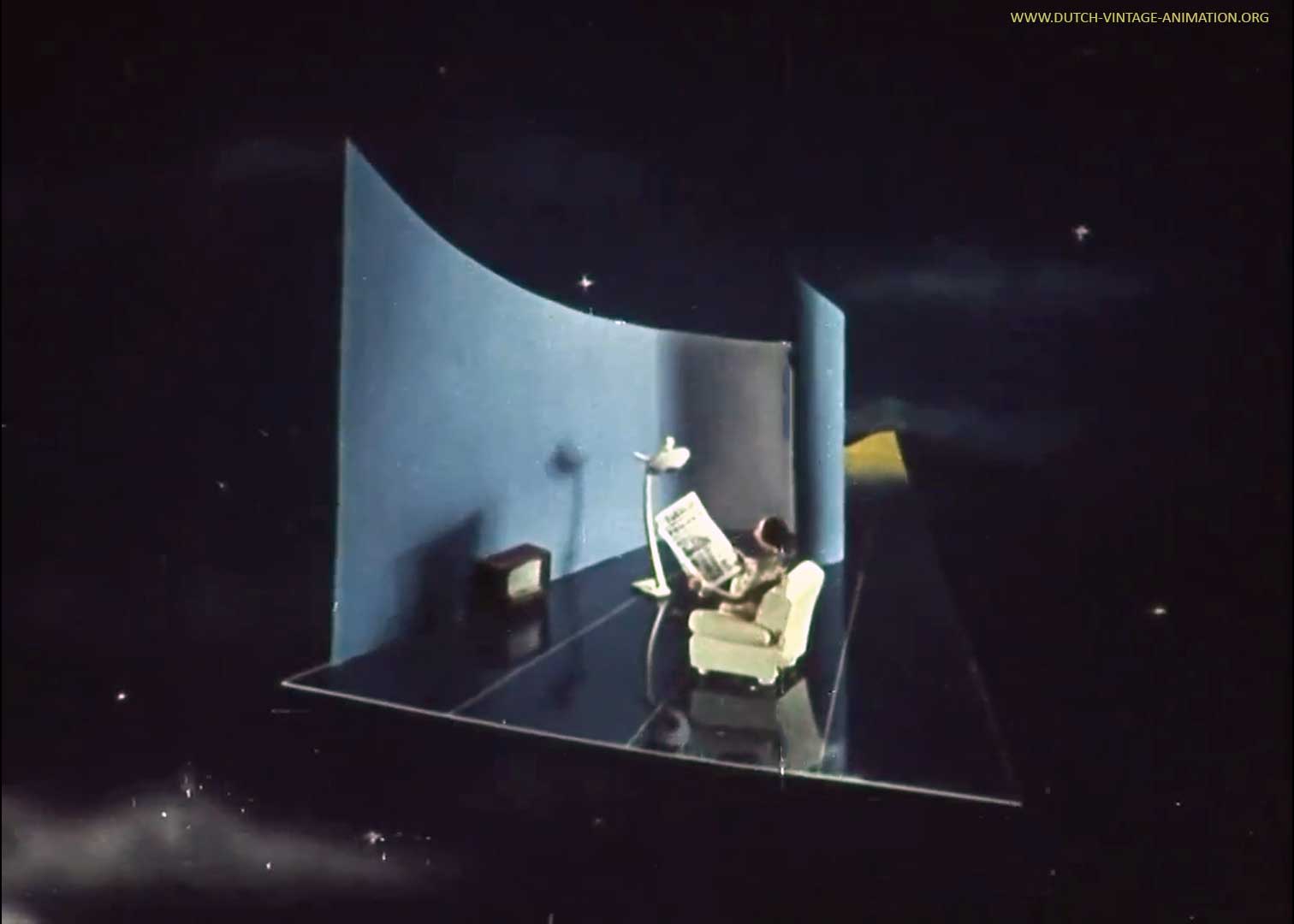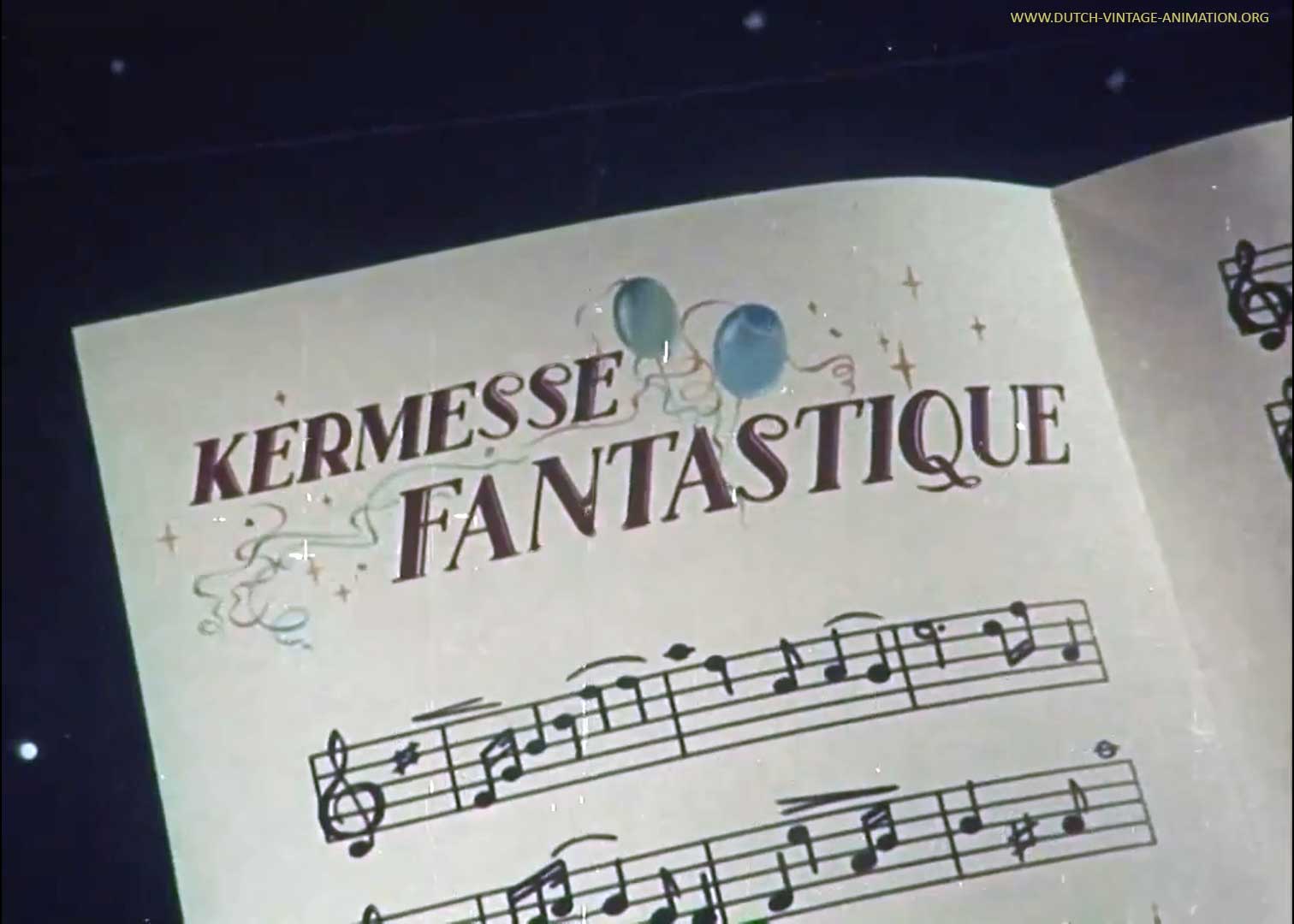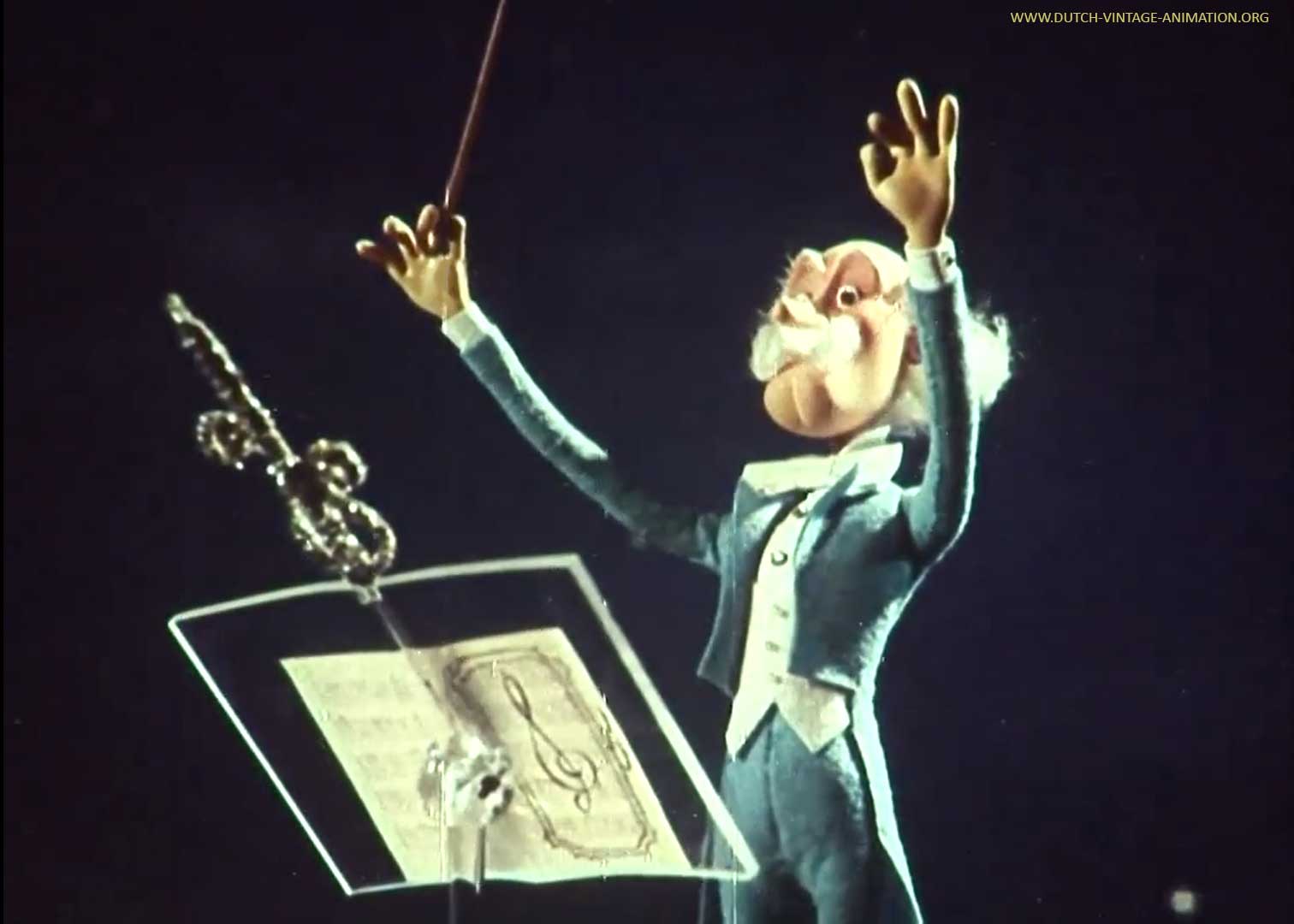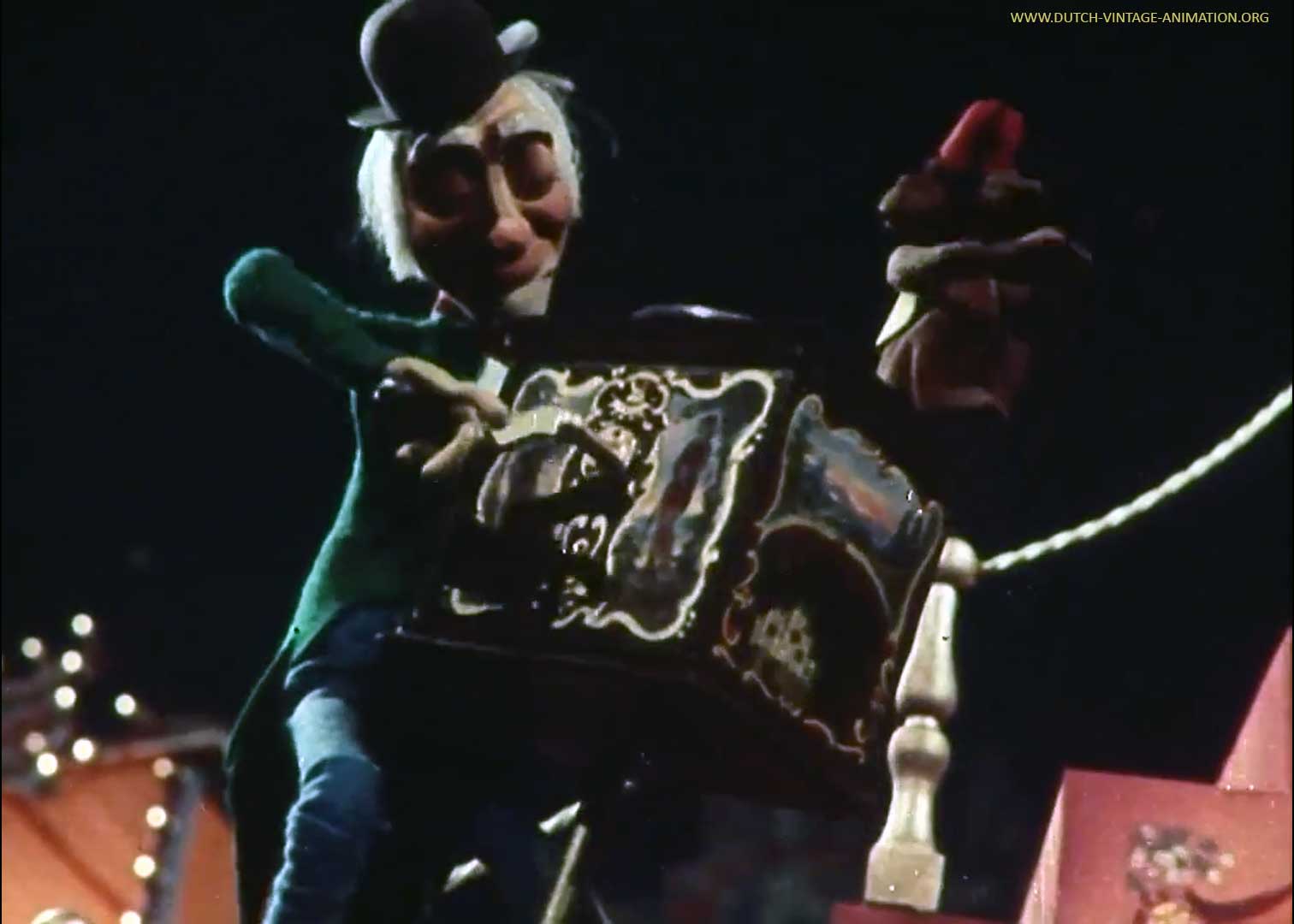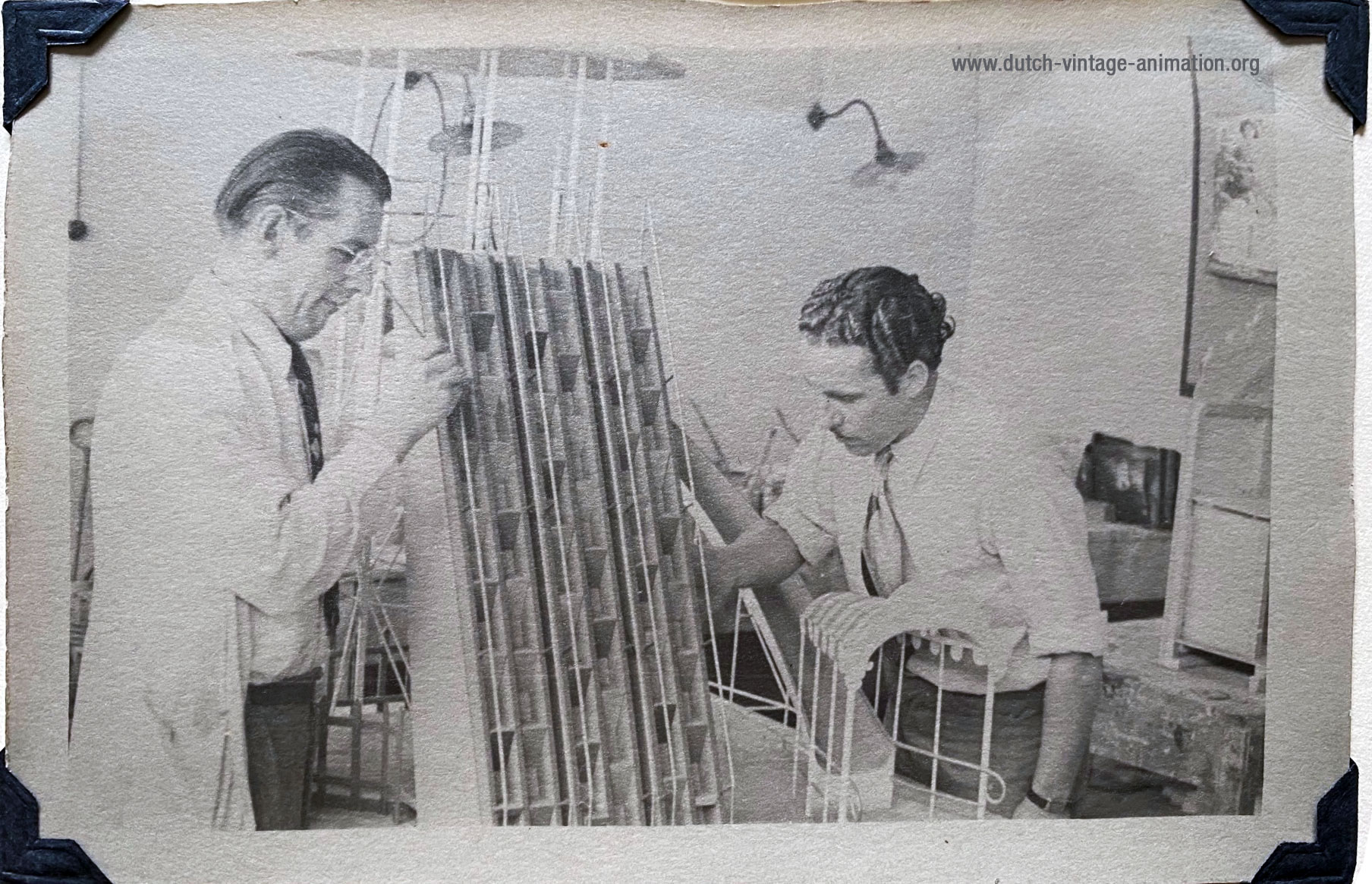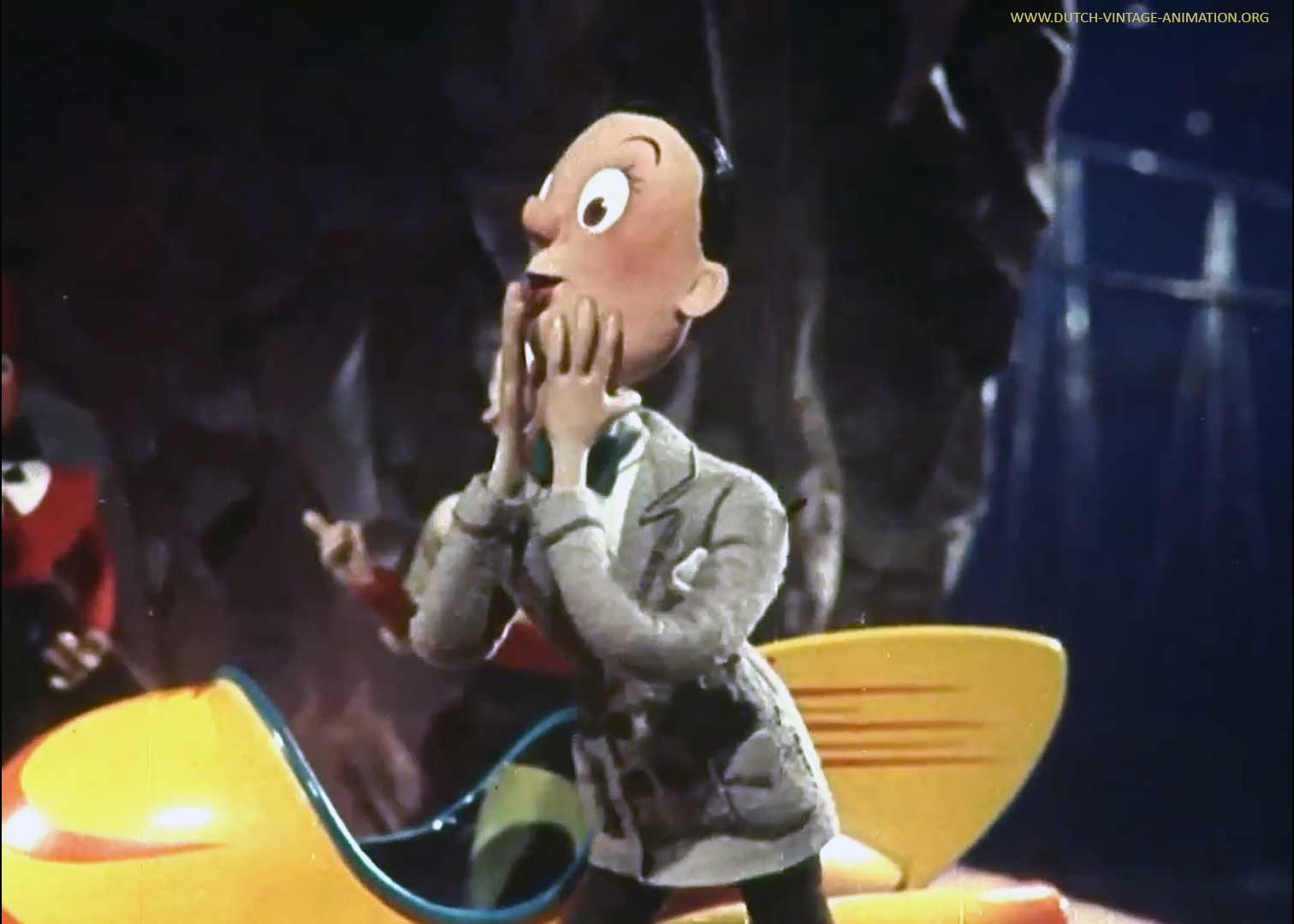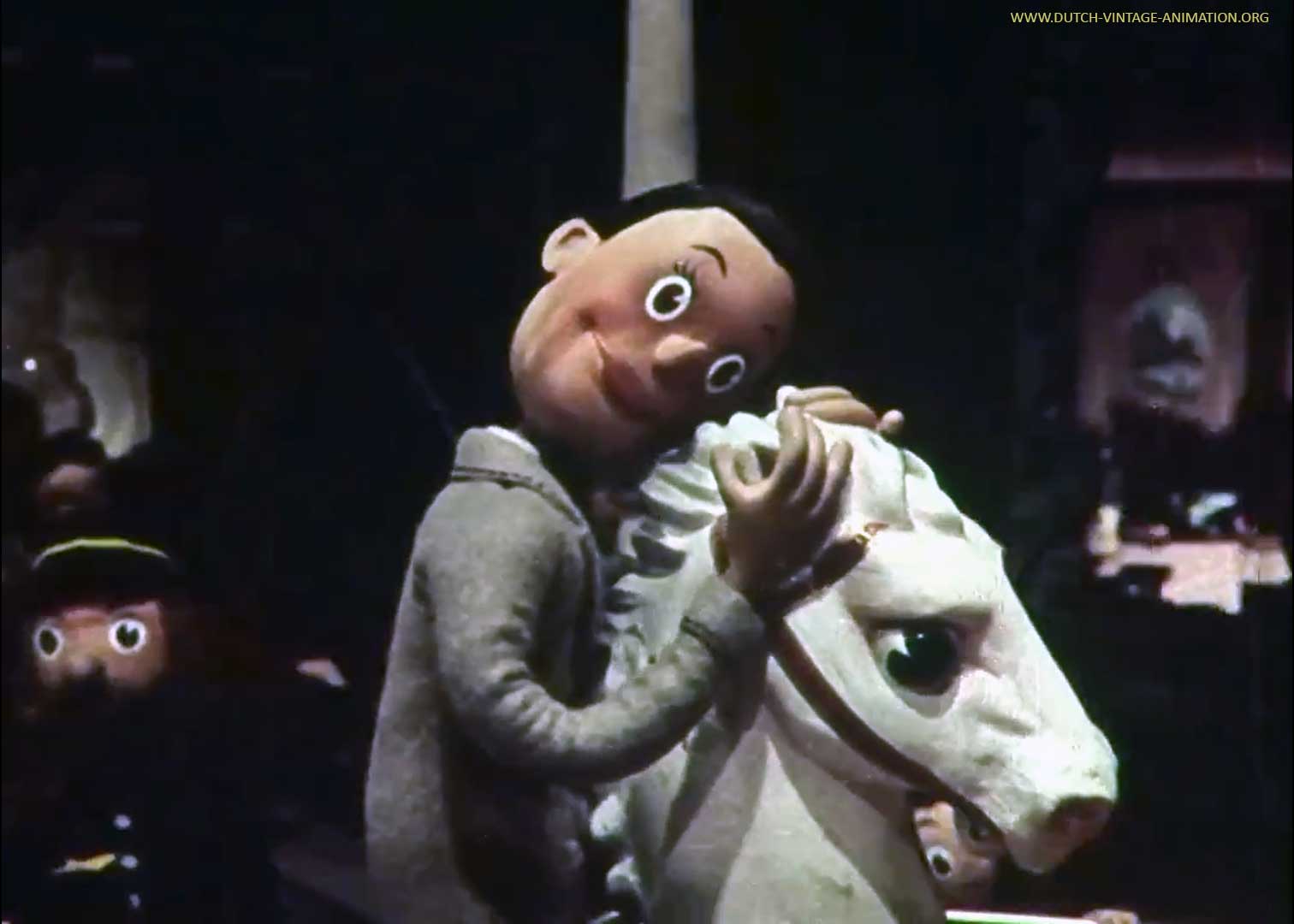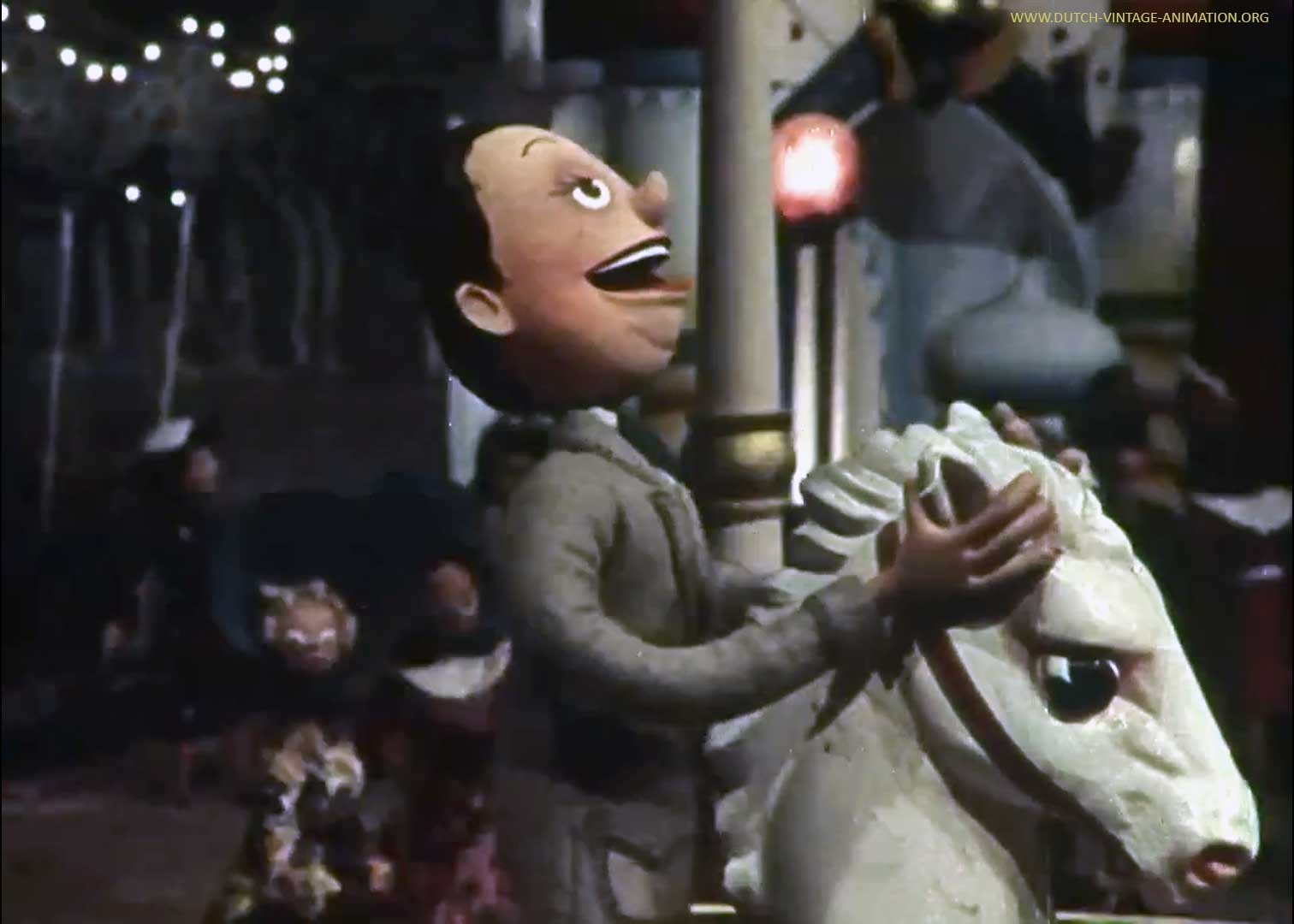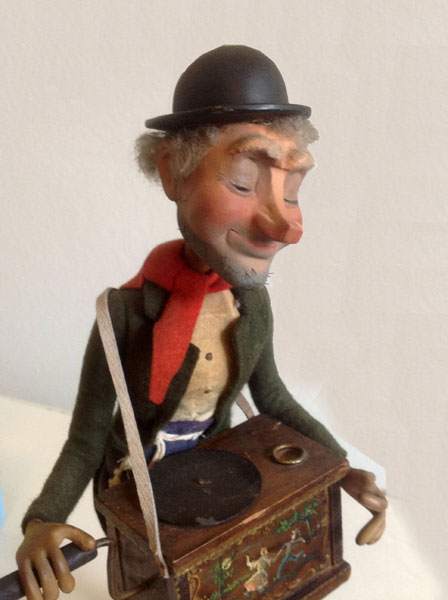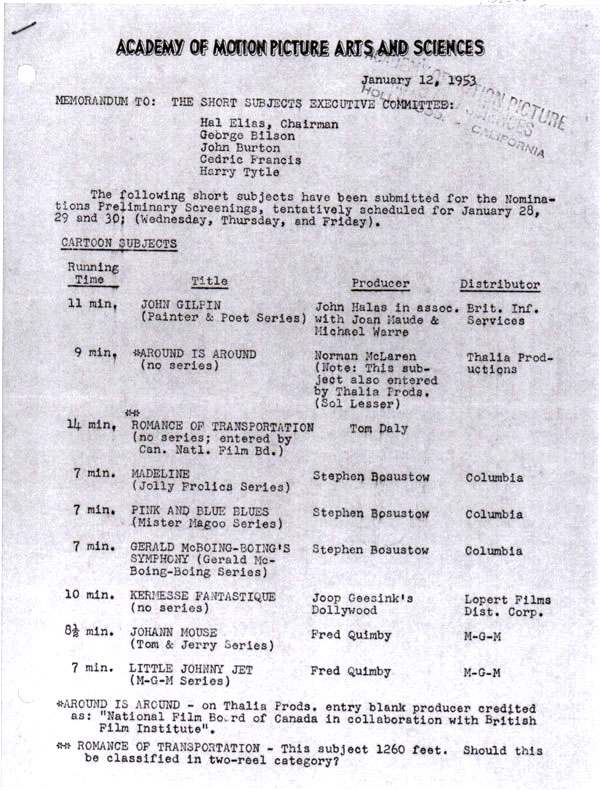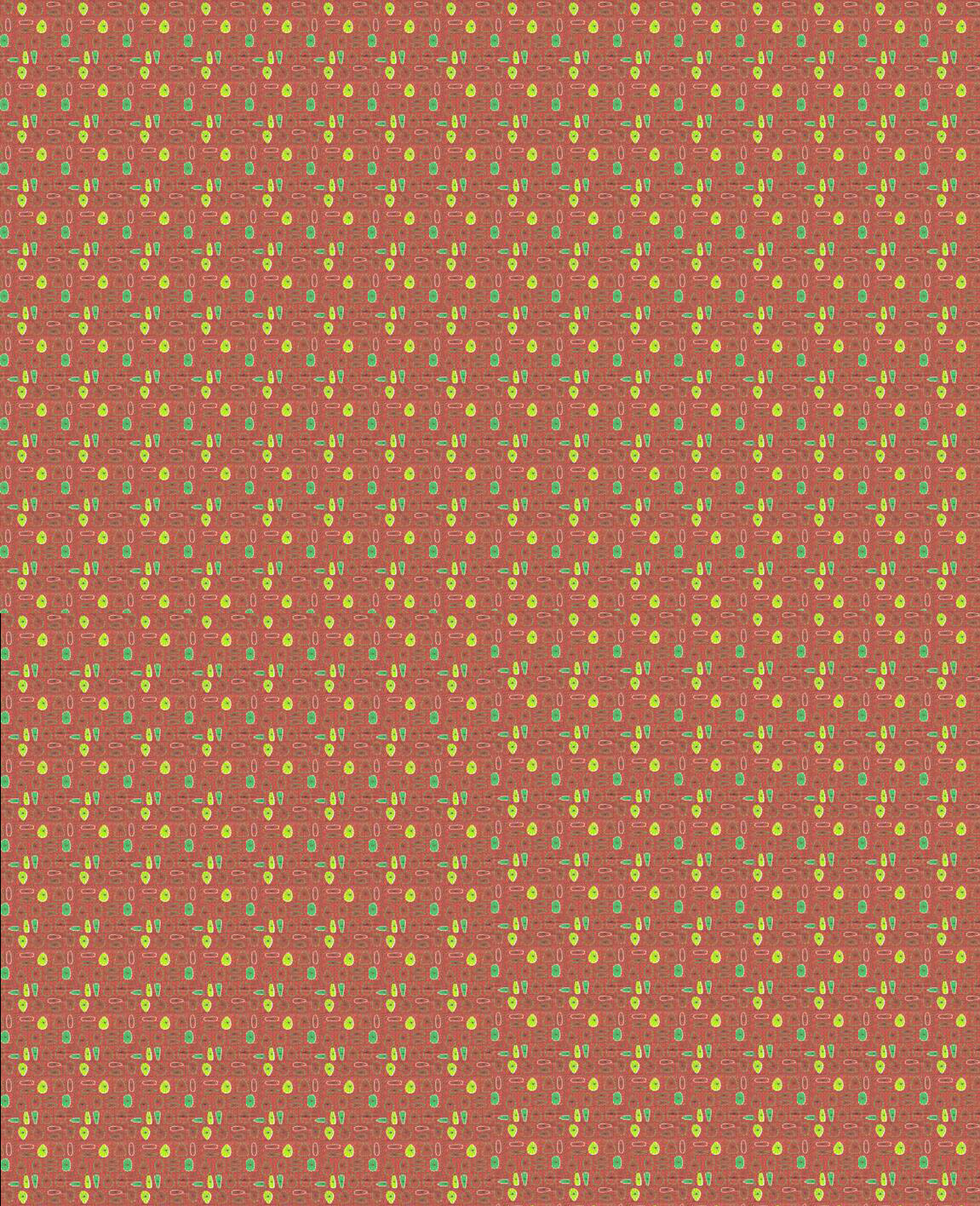
With the slogan "Technical Triumph" this 10-minute cinema commercial ends.
In 1951 Philips celebrated their 60th anniversary in Eindhoven and celebrated this with a large scale exposition titled: exposition titled: "Technical Triumph".
"State of art"
Many animation lovers consider Kermesse Fantastique as the ultimate Dollywood film. Of course there are different views about this. Still, fact is that in 1951 this breathtaking production was state of art in puppet films. The production budget was a substantial 100.000 Dutch guilders (now €750.000), with a production period of one and-a-half years.
According to the promotion poster (below), drawn by Joop Geesink, the production featured 300 puppets. It's one big spectacle with hundreds of puppets, beautiful set pieces and thousands of lights. The film's score is a dynamic and atmospheric piece by renowned French composer George Auric, and performed by The Residence Orchestra, conducted by by Willem van Otterloo.
For a considerable time this film was used as an animated "curtain raiser"-short before the main feature, and was very successful in the festival circuit. This provided Geesink global fame. Kermesse Fantastique obtained a second life as a part of film entertainment packages which were shown at schools and youth centres.
Trivia
Looking closer, one can see that Jószef Misik's background animation is often quite minimalistic. People in the public glide along, they don’t walk. In later productions, animated by Cor Icke, this wouldn’t happen again. Furthermore the style differences between the puppets is striking. This arose because puppets from previous productions were used for the crowd scenes. But within the overall visual spectacle these imperfections hardly matter.
Academy Award
Altough the film was made in 1951, is was selected and nominated for the prestigious Academy Award in 1953. Kermesse Fantastique did not win this award, but generated publicity for the studio.
Puppetoon
Another point of interest is that the poster describes this puppet film as a "puppetoon". This name is a throw-back to George Pal's animated adverts of the late 30’s. For this film presentation the name “George Pal” was used again. The advertiser probably appealed to the old name recognition for a technique that was relatively new in the post war period. Both Pal and Geesink worked closely together with Philips executive Sies Numann.
Observant viewers might be surprised to hear that fragments from Kermesse show up in the Dutch film Turkish Delight (Turks Fruit) - 1973 by Paul Verhoeven; they were used to fill a tv screen playing in the background.
Credits
| Title: | Kermesse Fantastique | |
|---|---|---|
| Client: | Philips Radios | |
| Year of production: | 1951 | |
| Duration: | 10 minutes | |
| Music: | George Auric | |
| Performed by: | The Residence Orchestra by Willem van Otterloo | |
| Art Director: | More persons were involved: Jan Coolen, Henk Kabos | |
| Directed and Animation: | József Misik | |
| Puppets and props: | Harry Tolsma, Theo Doreleijer and others | |
| Backgrounds: | Ko (Jacob) Brautigam | |
| Format: | 35 mm, Technicolor |
